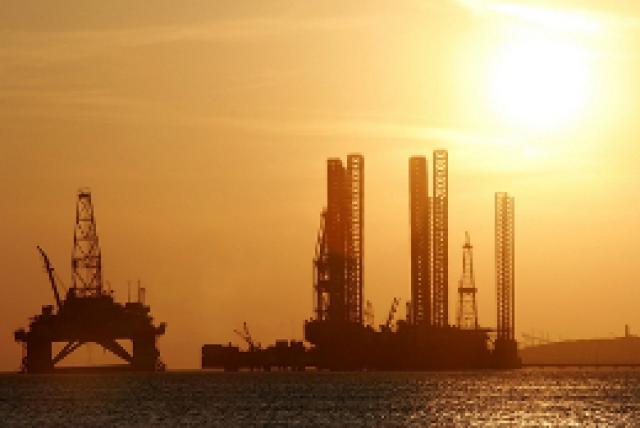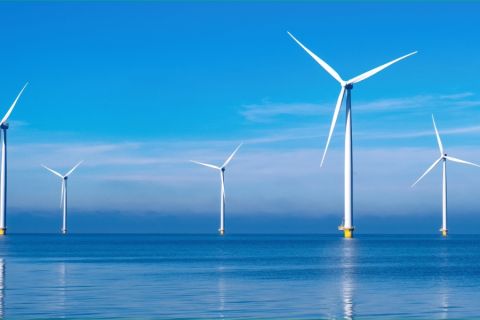
New field development and active exploration programs have fueled an uptick in activity in the Caspian Sea, but the action is bringing along a major challenge – the need for more rigs.
The shortage of rigs in the face of expected drilling plans was highlighted in a recent study by energy analytics firm Wood Mackenzie. More than 150 wells have been drilled by mobile offshore rigs in the Caspian Sea in the past eight years, and that figure is expected to increase by 39% by 2020 given activity planned in sectors controlled by Iran, Azerbaijan, Turkmenistan, Russia, and Kazakhstan. The firm’s analysis shows future activity could include 217 wells, comprised of 60 exploration and appraisal wells and 157 development wells.
“Our demand forecast could be on the conservative side as it only includes relatively firm exploration, appraisal, and development plans, and does not include wells contingent on future exploration success,” according to the study.
Currently, there are 19 mobile offshore rigs in the Caspian Sea. But the study pointed out that nine of the rigs are cold stacked and may not be used again. Of the nine active rigs, there are only four semi-submersibles available to serve the region’s deep, high pressure reservoirs, mainly located in the Azerbaijani and Iranian sections; however, the study noted all four of those rigs are tied into long-term contracts. The region’s existing fleet of jackup rigs, which is mostly used in the Caspian Sea at water depths of 10 m (33 ft) to 120 m (394 ft), stand at four. There is one ultra-shallow water barge in use.
Leading the demand for rigs, the study stated, are:
• An anticipated increase in deepwater drilling in Azerbaijan. Among the noted projects is BP’s Shah Deniz field. The second stage of the project will bring gas from the Caspian Sea to Turkey and Europe, adding another 565 Bcf per year of gas production to about 318 Bcf per year from Shah Deniz Stage 1, according to BP. The company’s plans include two production platforms and 26 subsea wells drilled with semi-submersible rigs. The study also mentioned Total’s Absheron field discovery and exploration interest by other companies could increase demand.
• The Sardar Jangal discovery in Iraq, which reportedly has reserves of 50 Tcf of gas. Additional exploration potential in the country could further increase the rig need, the study stated.
• Shell’s Pearls project and the Kashagan consortium’s Kalamkas More field, both in Kazakhstan. The two are among the new developments mentioned in the study that will require jackup rigs. Additional blocks set to be awarded combined with recently awarded blocks also is expected to impact demand.
• Activity by Lukoil in Russia. Projects stemming from the Yuri Korchagin field going onstream, Vladimir Filanovsky under development, and other discoveries also will require rigs. The study noted that the seven wells will be drilled by a jackup rig in the Yuri Korchagin field.
• Active drilling programs by Dragon Oil and Petronas in Turkmenistan. Coupled with expected activity from Zarubezhneft and RWE Dea, set to drill their first exploration wells in 2013, rig demand will increase more in the country, according to the report.
“The rig shortage is particularly acute, as the Caspian’s landlocked nature makes it a very closed market, difficult to transport rigs in and out,” the study explained. “The tight rig market is exacerbated by bureaucratic obstacles to transporting goods and services between countries, with companies finding it, at best, very time-consuming to bring equipment from one country to another.”
Another problem posed by the shortage includes the possibility of fluctuations in day rates, according to the study. “Overall, well costs remain high owing to the expense (and long lead times) of importing materials and equipment.”
However, it appears that help is on the way, as companies have announced plans to build new rigs. The study revealed four jackup rigs are under construction – two in Russia and one each in Kazakhstan and Turkmenistan. There are also plans for a two jackups in Turkmenistan and one in Azerbaijan. Additionally, a barge is being built in Kazakhstan.
The new fleet will help meet jackup rig and barge demands in Russia, Kazakhstan and Turkmenistan; however, a shortage of semi-submersibles will continue for the south, according to the study.
“What seems certain is that, with many new rigs being added to the fleet, the increase in drilling activity and the new capacity for building rigs in the region, the Caspian Sea is starting to come of age as an oil and gas province.”
Contact the author, Velda Addison, at vaddison@hartenergy.com.
Recommended Reading
Guyana’s Stabroek Boosts Production as Chevron Watches, Waits
2024-04-25 - Chevron Corp.’s planned $53 billion acquisition of Hess Corp. could potentially close in 2025, but in the meantime, the California-based energy giant is in a “read only” mode as an Exxon Mobil-led consortium boosts Guyana production.
US Interior Department Releases Offshore Wind Lease Schedule
2024-04-24 - The U.S. Interior Department’s schedule includes up to a dozen lease sales through 2028 for offshore wind, compared to three for oil and gas lease sales through 2029.
Utah’s Ute Tribe Demands FTC Allow XCL-Altamont Deal
2024-04-24 - More than 90% of the Utah Ute tribe’s income is from energy development on its 4.5-million-acre reservation and the tribe says XCL Resources’ bid to buy Altamont Energy shouldn’t be blocked.
Mexico Presidential Hopeful Sheinbaum Emphasizes Energy Sovereignty
2024-04-24 - Claudia Sheinbaum, vying to becoming Mexico’s next president this summer, says she isn’t in favor of an absolute privatization of the energy sector but she isn’t against private investments either.
Venture Global Gets FERC Nod to Process Gas for LNG
2024-04-23 - Venture Global’s massive export terminal will change natural gas flows across the Gulf of Mexico but its Plaquemines LNG export terminal may still be years away from delivering LNG to long-term customers.





